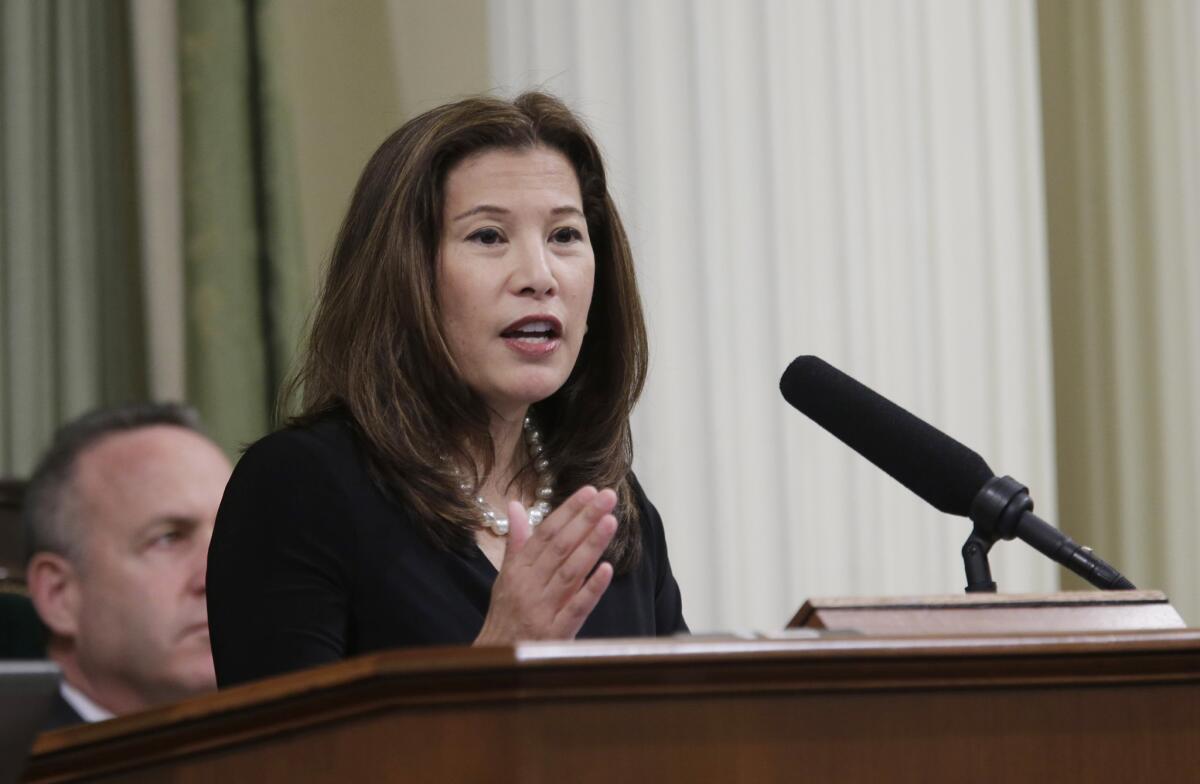Audit questions pay, expenses of California court administration

- Share via
Reporting from Sacramento — An agency administering California’s judicial system has spent $30 million in questionable costs and high salaries for managers because of a lack of proper oversight, meaning less money for the state’s cash-strapped courts, a state audit concluded Wednesday.
The audit found that the Administrative Office of the Courts (AOC) paid eight of its nine office directors more than the governor and many other high-ranking executive branch officials received during the four-year period ending in June 2013.
The AOC, whose functions were merged into the state Judicial Council last July, also employed more than 70 contractors and temporary employees and could have saved $7.2 million annually by using state employees in comparable positions, the audit found.
“This report concludes that questionable fiscal and operational decisions by the Judicial Council and the AOC have limited funds available to the courts,” wrote State Auditor Elaine M. Howle in a letter to Gov. Jerry Brown and state lawmakers who requested the review.
The Judicial Council, which is the policy body of the judicial system and is made up largely of judges, did not provide sufficient oversight of the Administrative Office of the Courts, which served as its staff agency, managing the judicial branch budget.
The audit has some “useful recommendations,” according to California Supreme Court Chief Justice Tani G. Cantil-Sakauye, who serves as chairwoman of the state Judicial Council. She noted some of the recommendations were also previously made by a Strategic Evaluation Committee for the council and are being carried out.
“This audit, while confined in scope, gives us another useful tool to help us make progress,” she wrote in a letter to court personnel Wednesday morning.
Legislators asked for the audit after judges complained that too much money was being spent by the bureaucracy in San Francisco even as 204 courtrooms had to be closed for lack of funds.
The audit found the AOC made about $386 million in payments over the last four years on behalf of trial courts for consultants and other expenses using funds appropriated to the trial courts “but could have paid a portion of those payments from its own funds.”
The audit also questioned the AOC’s maintenance of a fleet of 66 vehicles without requiring its offices to justify the need.
Auditors found the AOC paid eight of its nine office directors more than $179,000, which is higher than the salary for the governor and his top administration staff, who the auditors say, “have much broader responsibilities.” The top AOC administrator is paid $227,000 annually. The governor is paid $177,000.
The average salary for nearly 800 AOC employees was about $82,000, “while salaries in the executive branch average $62,000 and those in four large trial courts average $71,000,” the audit found.
The audit recommended a thorough review of compensation practices including an end to the AOC paying the employees’ share of retirement contributions.
Auditors also said the Judicial Council could save $5 million in rent each year by moving its San Francisco and Burbank offices to Sacramento, where rents are cheaper. Consolidation would also save travel and salary costs.
One administrator spent $22,000 traveling between offices over three years.
The court administration also spent between $137,000 and $265,000 per year on catering costs for branchwide meetings attended by judges, court executives, lawyers on the committees, and support staff.
[Updated at 11:45 am: A dissident group of judges called the Alliance of California Judges put out a statement: “It is now time for the Judicial Council, with direction from the recently-hired Administrative Director of the Courts, Martin Hoshino, to come to grips with what many of us have been saying for some time: the Judicial Council has lost touch with its primary mission of advising the courts, and has instead morphed into an over-bloated bureaucracy that places its own interests ahead of those of the trial courts it was created to serve.”]
More to Read
Sign up for Essential California
The most important California stories and recommendations in your inbox every morning.
You may occasionally receive promotional content from the Los Angeles Times.











